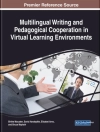A practical, holistic approach to integrating social studies with language arts and other content areas
This comprehensive, reader-friendly text demonstrates how personal connections can be incorporated into social studies education while meeting standards of the National Council for the Social Studies. Praised for its wealth of strategies that go beyond social studies content teaching—including classroom strategies, pedagogical techniques, activities, and lesson plan ideas—this book presents a variety of methods for new and experienced teachers.
Key Features
- Thinking Ahead invites readers to link their own experiences with the chapter content before reading
- How Do I? boxes give explicit, step-by-step instruction that demonstrates how to implement and apply the strategies, techniques, and activities described in the chapter
- Making Connections activities help readers make personal connections with the material
New to This Edition
The Second Edition has been significantly refined to incorporate new topic coverage and strategies needed by elementary and middle school social studies teachers
- New sections divide and organize the text into six thematic sections: foundational concepts, planning and assessment, instructional strategies, literacy, teaching subject area content, and enhancing democracy
- Differentiating instruction provides an additional focus on students with special needs and differentiating instruction
- Additional lesson plans and examples are offered throughout the text
Ancillaries available
- Password-protected instructor resources include a test bank, Power Point slides, sample syllabi, and Web resources.
- Open-access student study site provides a comprehensive selection of resources to enhance students′ understanding of the book′s content. The site includes practice tests, flash cards, links to NCSS standards, Internet search terms, and additional resources.
Tabela de Conteúdo
Preface
I. Building a Framework for Social Studies
1. Defining Social Studies
2. Celebrating Diversity in Social Studies Education
II. Planning and Assessment in Social Studies
3. Planning Learning Experiences
4. Assessing Student Growth
III. Instructional Strategies in Social Studies
5. Instructional Models in Social Studies
6. Differentiating the Curriculum Using Inclusive and Multi-Level Practices
7. Teaching Cognitive Processes in Social Studies
8. Inquiry Learning in Social Studies
9. Learning Through Human Interaction
IV. Using Social Studies to Enhance Literacy
10. Textbooks and Social Studies
11. Learning Through Literature and Language Arts
V. Teaching Subject Area Content in Social Studies
12. Teaching History and Geography
13. Teaching Civics and Government and Economics
VI. Using Social Studies to Enhance Democracy
14. Using Current Events and the Internet to Teach Social Studies
15. The Intrapersonal and Interpersonal Dimensions of Social Studies Education
Epilogue
Sobre o autor
Dr. Andy Johnson was a 1976 graduate of Grantsburg High School in Grantsburg, Wisconsin. He attended the University of Wisconsin, River Falls where he graduated with a B.S. degree in Music and Speech-Communication. After earning elementary teaching licensure, he taught 2nd grade in River Falls, Wisconsin from 1983-1986. He went on to teach in elementary schools in the Twin Cities area and also spent three years working in the Grantsburg School District as A 5th grade teacher and the Gifted Education Coordinator. He earned his Ph.D. from the University of Minnesota in Literacy Education in 1997. He is currently working at Minnesota State University, Mankato as a professor of literacy in the Department of Special Education where he specializes in literacy instruction for students with reading difficulties. He is the author of 10 books and numerous academic articles related to literacy, learning, teacher development, and the human condition. He lives in North Mankato with his wife, Dr. Nancy Fitzsimons and his dogs Mickey and Emmet.












